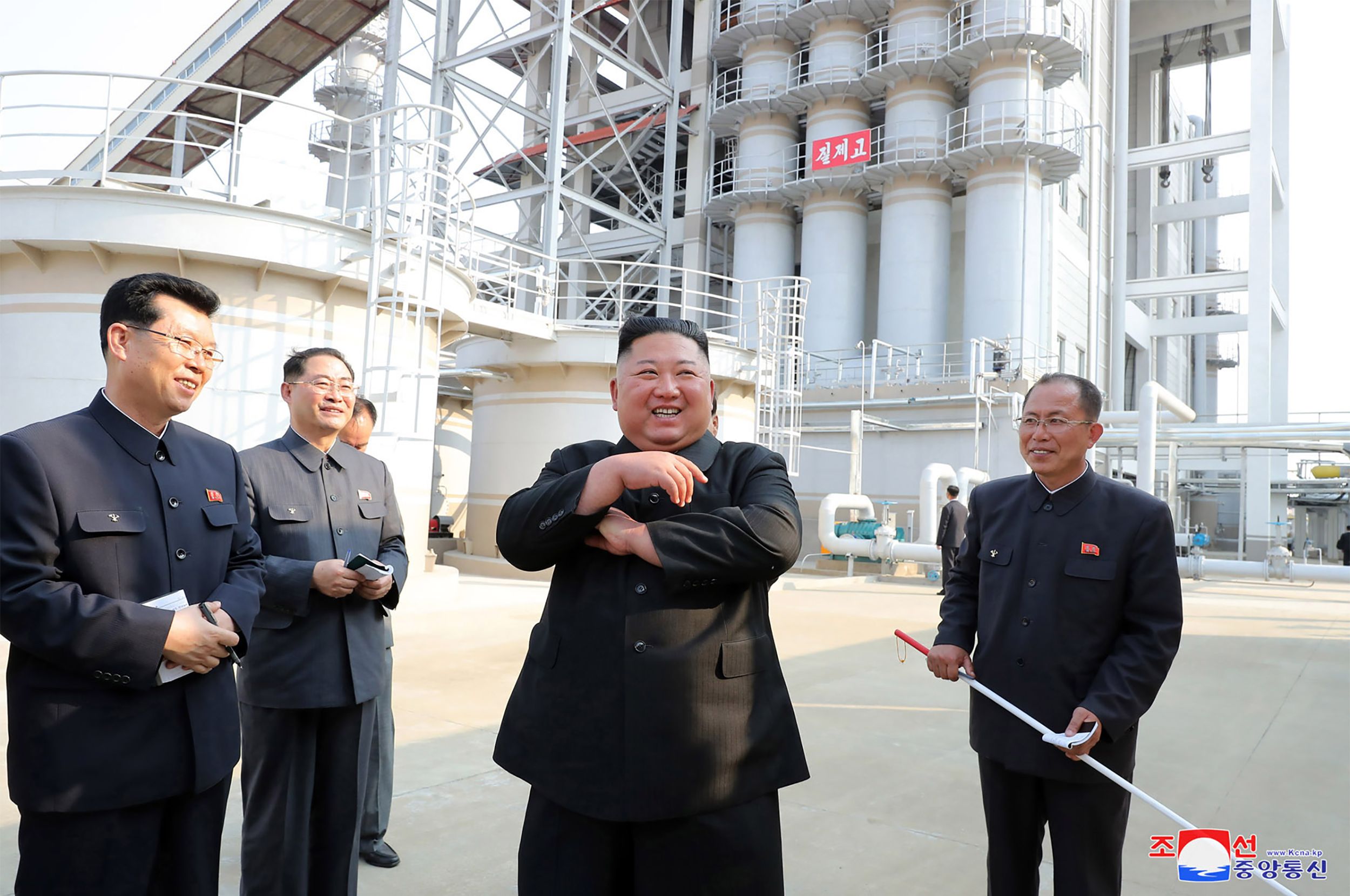Kim Jong Un reminds world of nuclear threat at fertiliser plant
Sign up now: Get insights on Asia's fast-moving developments

North Korean leader Kim Jong Un at the fertiliser factory in Sunchon, North Korea, on May 1, 2020.
PHOTO: AFP/KCNA VIA KNS
Follow topic:
SEOUL (BLOOMBERG) - The place North Korean leader Kim Jong Un visited may be just as significant as showing his face in public after a three-week absence that raised questions about his health and control of the nuclear-armed state.
State media on Saturday (May 2) said Mr Kim celebrated the completion of the Sunchon Phosphatic Fertiliser Factory north of Pyongyang, the capital. Although the inspection tour itself appeared routine, the facility has been the subject of high-level attention for years due to its dual-use potential: North Korea could possibly tap it to increase production of both food and nuclear weapons.
"The DPRK does need fertiliser, and the information on how to extract uranium in the midst of that process is readily available," Ms Margaret Croy, a research associate at the Middlebury Institute of International Studies at Monterey, said in a research paper published last month, referring to the country by the abbreviation of its official name - the Democratic People's Republic of Korea.
It said the fertiliser plant offers Mr Kim the opportunity to help boost the state's flagging economy by helping agricultural production and can aid in uranium extraction from phosphoric acid, allowing North Korea to conceal its nuclear activities from the outside world.
"The implication of such work being conducted in the DPRK is clear: it has the potential to considerably alter open-source estimates of how much yellowcake uranium the DPRK is able to produce annually, which in turn affects estimates of how many nuclear warheads the DPRK can make," Ms Croy wrote.
Under Mr Kim's leadership, North Korea has made a sharp inward turn to develop its nuclear and missile programmes, relying as much as it can on domestic technology and material to advance its weapons under tightened global sanctions designed to prevent it from acquiring the key components needed to realize its atomic ambitions.
Mr Kim visited the plant in January, and satellite imagery shows that it has grown considerably since a groundbreaking ceremony in 2017. Two of Mr Kim's top officials visited it several times over the past three years as construction proceeded, according to state media reports.
Ms Croy's paper did not offer proof that the plant was a part of North Korea's nuclear programme, and some other analysts were sceptical.
"Theoretically, the fertiliser factory can be used to produce yellowcake, but why would the North do that when it already can produce something more advanced than that?" said Mr Cho Han-bum, a senior research fellow at the Korea Institute for National Unification.
North Korea has ample deposits of uranium, and informed the International Atomic Energy Agency in 1992 that it has two mines and two processing plants, which have been closely watched since then. It later informed the IAEA that it has one plant to enrich uranium for weapons, but outside experts believe it has several more.
The Kim family for decades had relied on the outside world to get it started on nuclear materials and missiles to deliver them, seeking help from its former sponsor, the Soviet Union, and its current biggest benefactor, China. It used to import weapons from abroad and develop them into its own systems.
But over the years, global sanctions have made it more difficult to rely on others and spy satellites have been keeping a closer eye on its weapons programme.
The nuclear programme has largely been self-sufficient for decades. It used to turn out enough plutonium for one nuclear bomb a year, and now relies mainly on uranium enrichment. According to weapons experts, North Korea produces enough fissile material for about six bombs a year.
"Pyongyang needs to have most of the supply chain for the production of nuclear warheads and missiles indigenised - and by all accounts it appears to have largely done so," said Mr Ankit Panda, a weapons expert who is an adjunct senior fellow at the Federation of American Scientists.
He added there are still some components thought to be sourced from overseas, though North Korea has shown it "has the industrial capacity to build missile airframes, solid and liquid propellants, and even missile engines".
Under Mr Kim, weapons experts said North Korea developed a hydrogen bomb and an intercontinental ballistic missile capable of delivering a warhead to all of the US, its main adversary. He has made his nuclear and rocket scientists national heroes, and - after tests in 2017 - rewarded many of them with luxury apartments in Pyongyang.
During his visit to the fertiliser factory on May 1, Mr Kim said the project demonstrated the country's commitment to "self-reliance", according to the official Korean Central News Agency. He added that his father and grandfather would be "greatly pleased".

